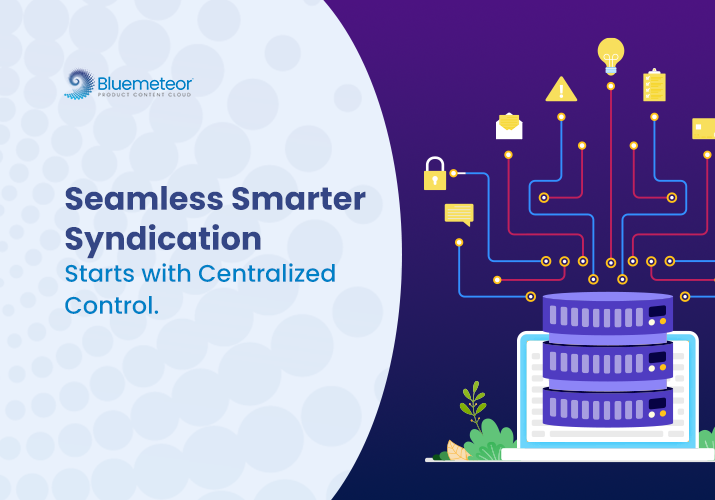Ready for PIM System Implementation? Don’t Get Benched by Common Mistakes

Implementing a Product Information Management (PIM) system can be a game-changer for streamlining your product data, but it’s not as simple as just plugging it in and hitting “go.” Many companies dive into PIM implementation with high hopes, only to face setbacks that could have been easily avoided.
Common Pitfalls in PIM Implementation and How to Avoid Them
To ensure you don’t end up on the sidelines, it’s crucial to understand the common mistakes that can derail your progress—and how to avoid them. Whether you’re at the start of your PIM journey or looking to refine your approach, these tips will help set you up for success.
In this post, we will take you through some of the most common challenges businesses face when implementing a Product Information Management (PIM) system and, more importantly, how to avoid them.
Here’s What You Will Get:
- A look at common mistakes companies makes when setting up a PIM system (and how to dodge them).
- Helpful tips on getting your PIM system up and running smoothly.
- How to know if your business is ready for a PIM system?
- Best practices to keep your product data sharp and well-managed with PIM software.
The Top 4 Common Mistakes in PIM System Implementation (and How to Dodge Them)
1. Skipping the Planning Phase
One of the biggest mistakes businesses make is diving headfirst into PIM implementation without a solid plan. It is easy to underestimate the scope of the project, leading to misalignment across teams.
Before choosing a PIM system, ensure that you have a clear understanding of your data needs, goals, and the resources required for a successful rollout.
What to Do: Take the time to get everyone on the same page—IT, marketing, and product teams should all have a say.
Align your goals, data workflows, and how the PIM will be integrated into your current systems. It will save you headaches down the line.
2. Not Considering Data Quality Early On
Your PIM system is only as good as the data it manages. A common mistake is failing to assess the quality and consistency of your existing product data.
Missing, outdated, or inconsistent data can lead to delays, errors, and added costs once you are in the thick of implementation.
Tip: Perform a thorough audit of your product data before implementing a PIM. Clean up duplicates, fill gaps, and standardize formats to prevent future issues.
Improving product data at this stage will make the transition smoother and more successful.
3. Neglecting Change Management
A new PIM system is not just a tech change—it is a shift in how your team works with product data. If you do not address the people’s side of things, it can lead to slow adoption or, worse, resistance.
That said, the tool can be great, but if your team is not ready to use it, you will run into trouble.
Tip: Get everyone involved early on. Provide training and show them how the PIM will make their jobs easier. By getting buy-in from the start, you will ensure smoother adoption and better results from your investment.
4. Overlooking Integration Complexities
PIM systems often need to play nicely with other software, like your ERP, CRM, or eCommerce platforms.
That said, assuming these integrations will be straightforward without the proper preparation can lead to problems during implementation.
What to do: Engage your IT team early in the planning phase to map out integration requirements.
Make sure your PIM solution is flexible enough to handle the unique needs of your tech ecosystem. Well, with BlueMeteor Product Content Cloud you do not have to worry about it, as our platform is designed to integrate seamlessly with a wide range of systems, ensuring smooth communication between your tools and minimizing the need for complicated workarounds.
Is Your Business Ready for a PIM System?
Before diving into PIM implementation, take a step back and ask yourself: is your business ready for it? Here are a few signs that might indicate you are ready:
Are you dealing with product data across multiple channels and struggling to keep it all consistent?
Are errors or inconsistencies in your product information affecting your customer experience or sales?
Is your team wasting too much time on manual data entry and updates?
If any of these resonate with you, then it might be time to invest in a PIM system. A well-implemented PIM helps centralize product data, improve efficiency, and enhance the overall customer experience.
BLUEMETEOR PRODUCT CONTENT CLOUD
We understand your product content needs.
And guess what? We’re here for you. We’ll answer all your queries and help your business start an amazing journey, at the speed the market demands..
3 Best Practices for PIM System Success
| Start Small, Scale Up | Focus on Continuous Improvement | Prioritize User Adoption |
| It can be tempting to tackle everything at once, but starting small is often the smarter approach. Focus on implementing the PIM for one product category or a specific dataset. Learn from that experience and then expand once things are running smoothly. | Even after the system is live, the work is not done. Keep revisiting your data quality, workflows, and integrations to ensure everything is running efficiently. The beauty of a good PIM system is that it grows and evolves with your business, so stay flexible. | The system will not run itself. Make sure your team knows how to use it and feels comfortable with the system. Focus on training and keep things simple and intuitive. The more your team uses the system, the better your results will be. |
Wrapping Up
Getting a PIM system up and running can really transform your business, but it is all about doing it the right way. By avoiding the common pitfalls and sticking to best practices, you can make sure your PIM system helps your business grow, rather than slow you down. That’s where we come in.
At BlueMeteor, we are all about making your product data work for you. Our Product Content Cloud is built to support your team, streamline your processes, and help your business thrive.
We are here to guide you through the process, so you do not get tripped up by the usual bumps along the way.
“Learn how Bluemeteor can unify your systems and turn your product data into a competitive advantage—or start by getting your product data health check to see where you stand today.”




